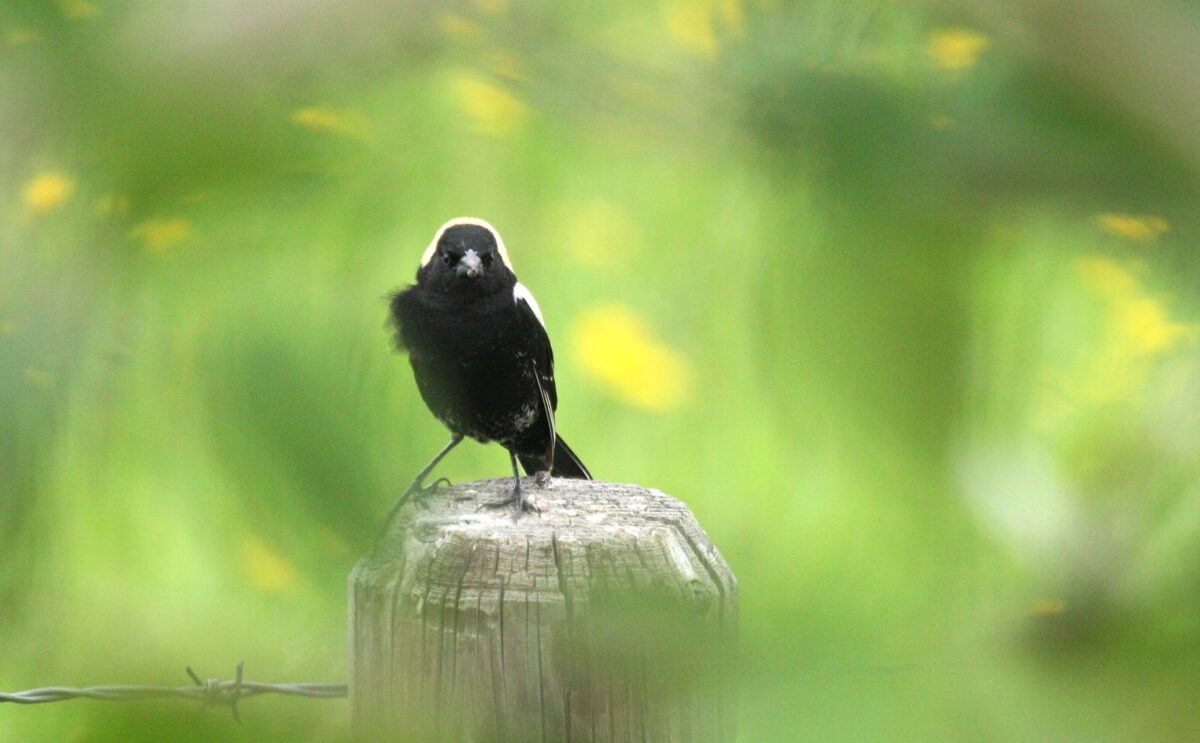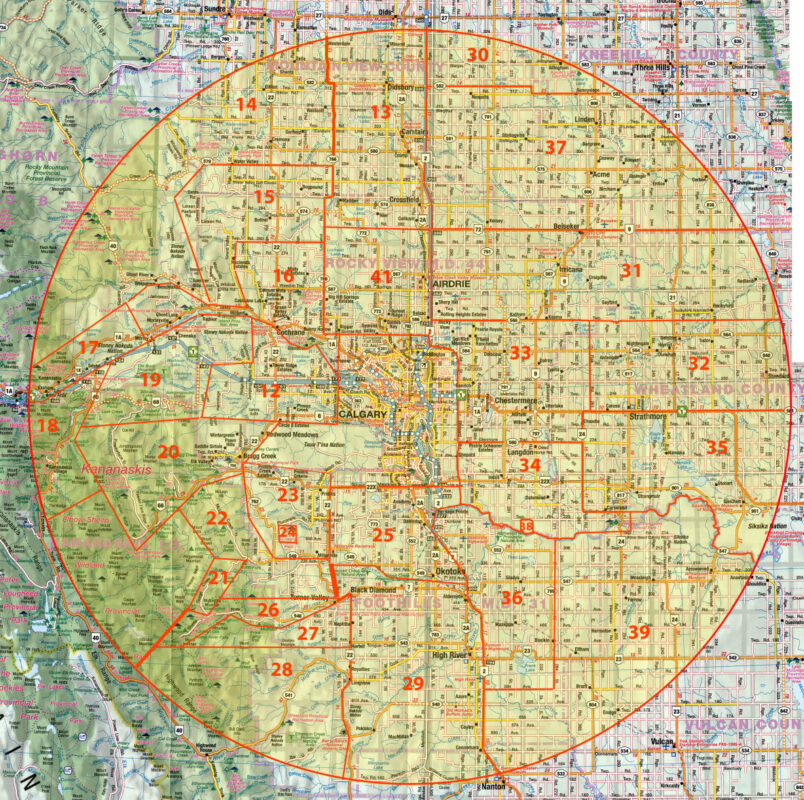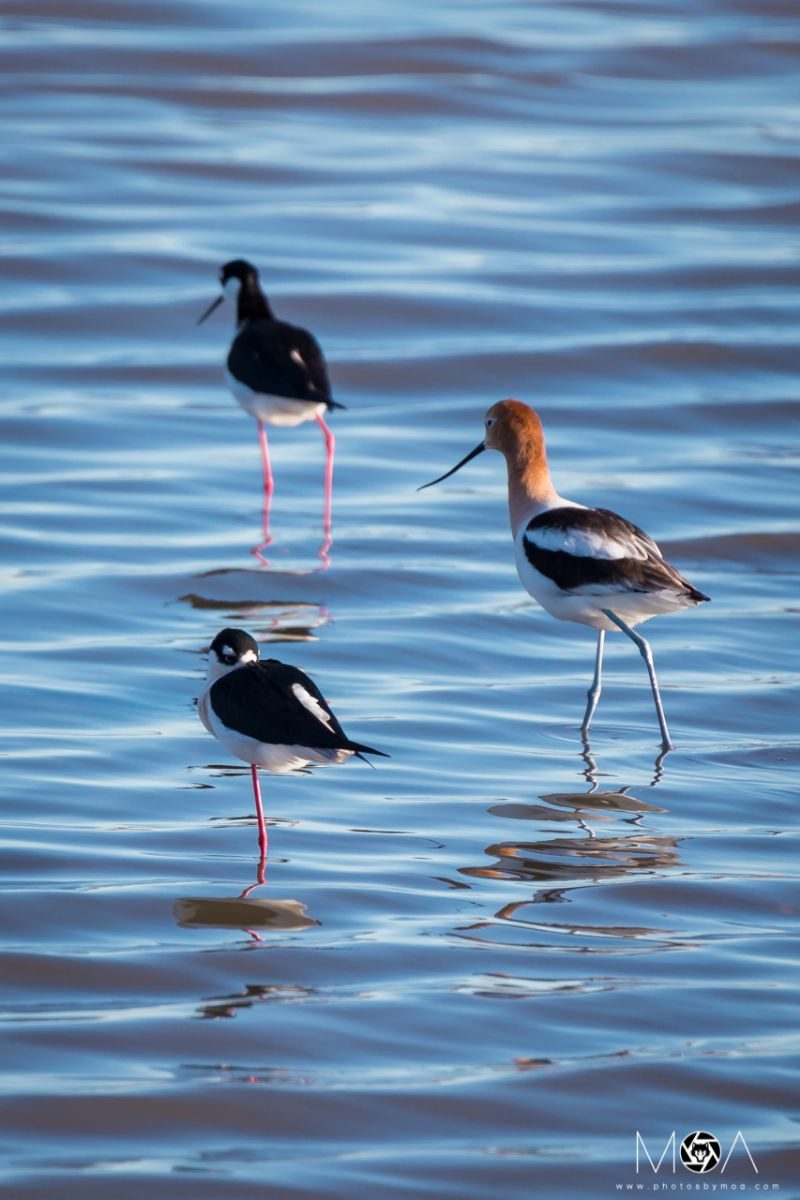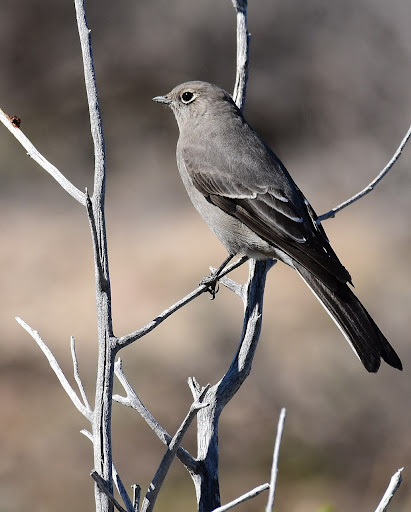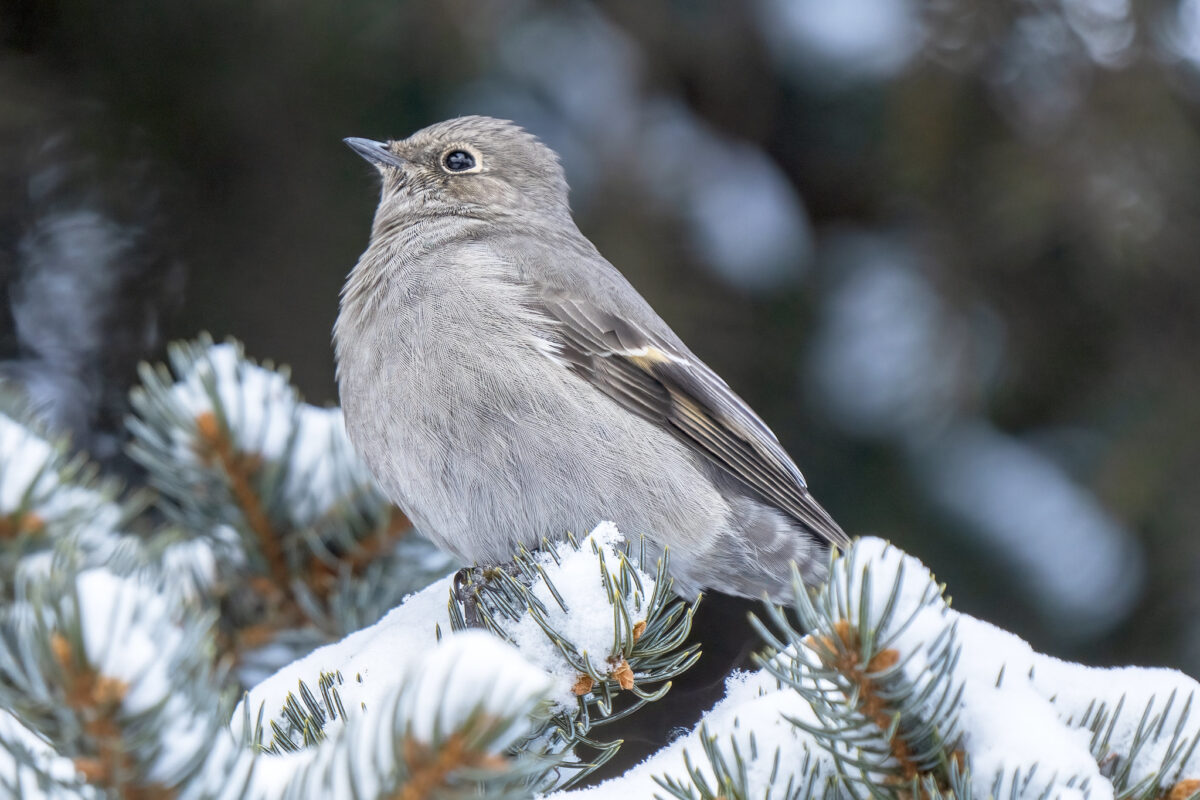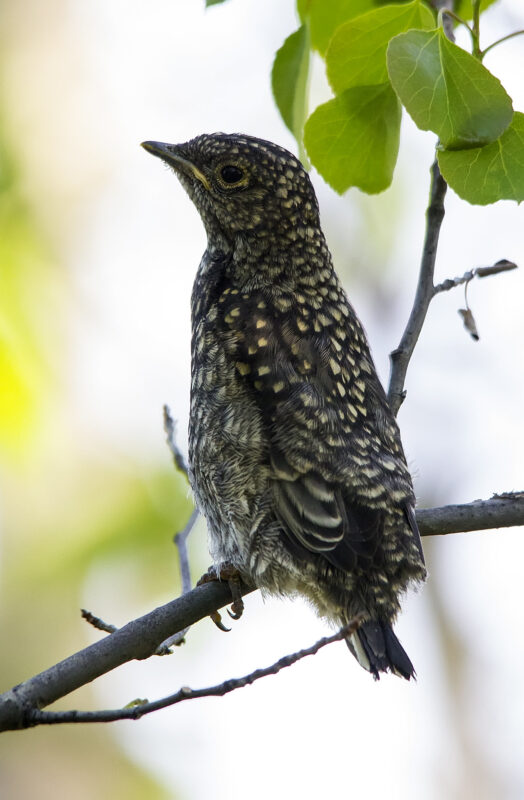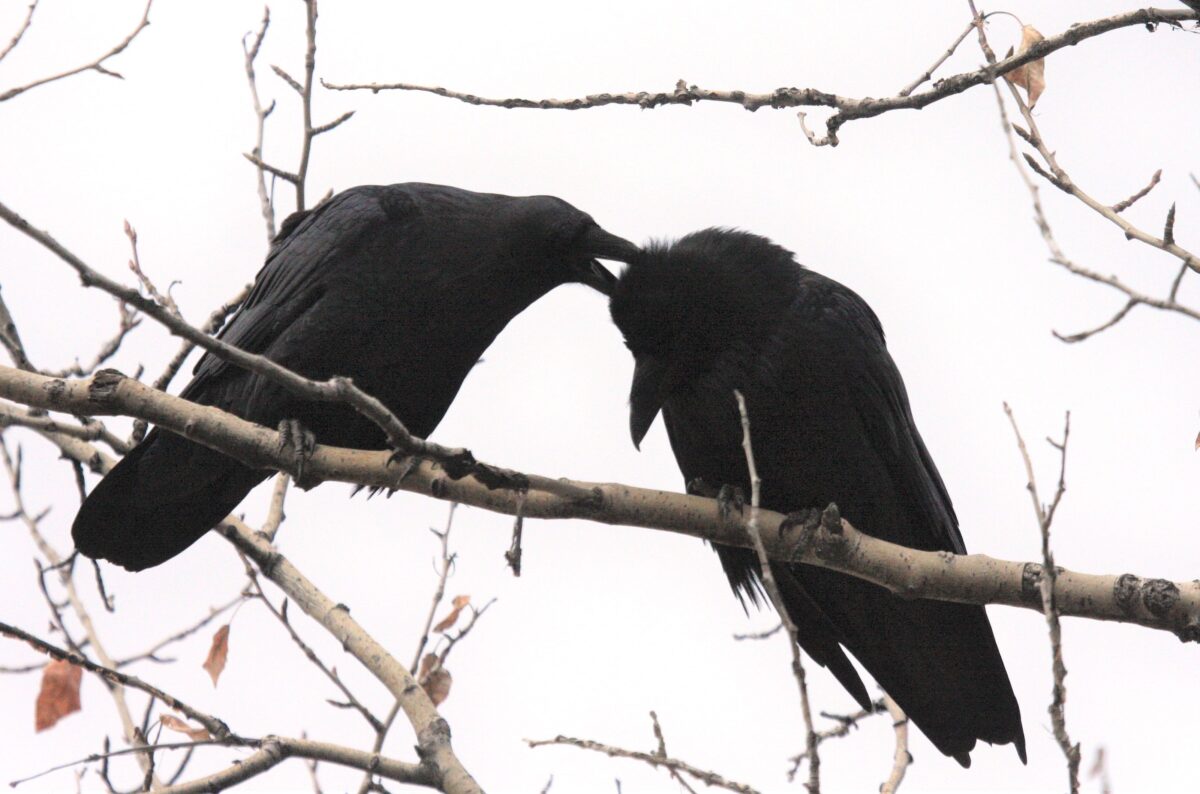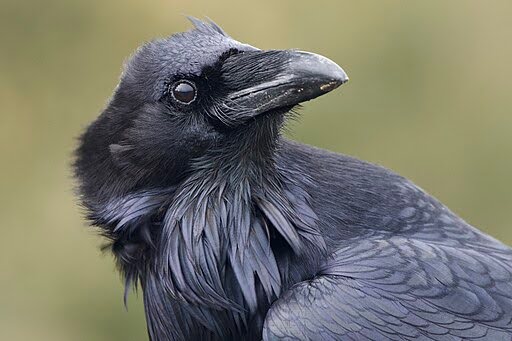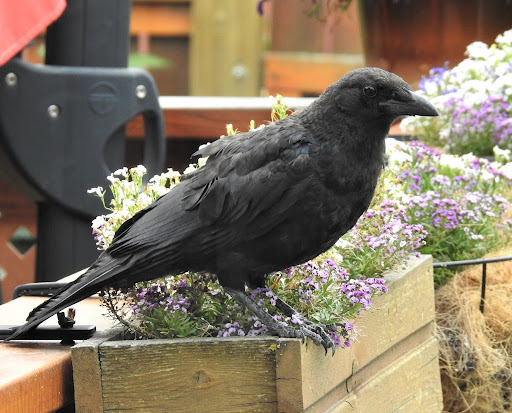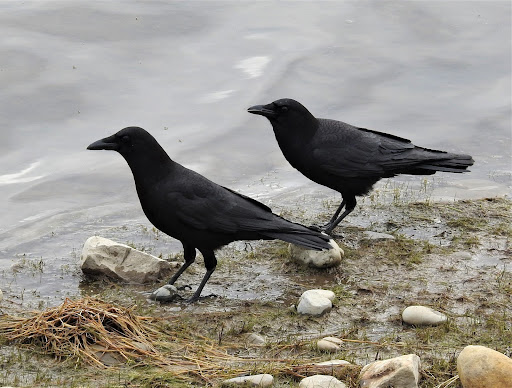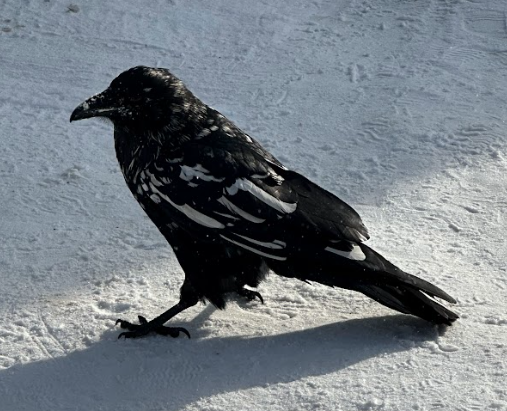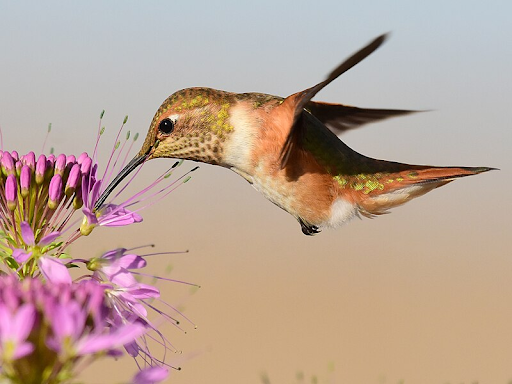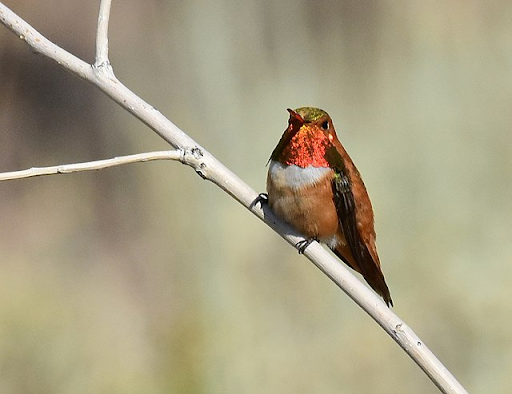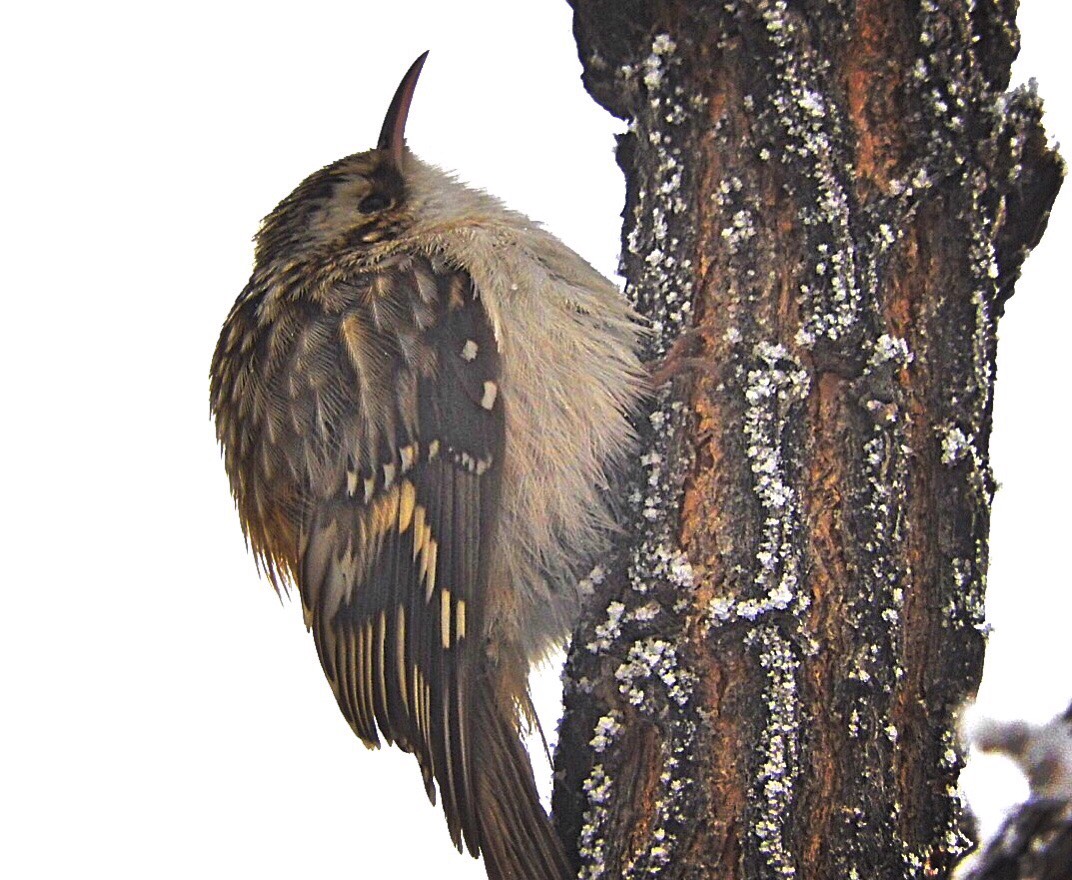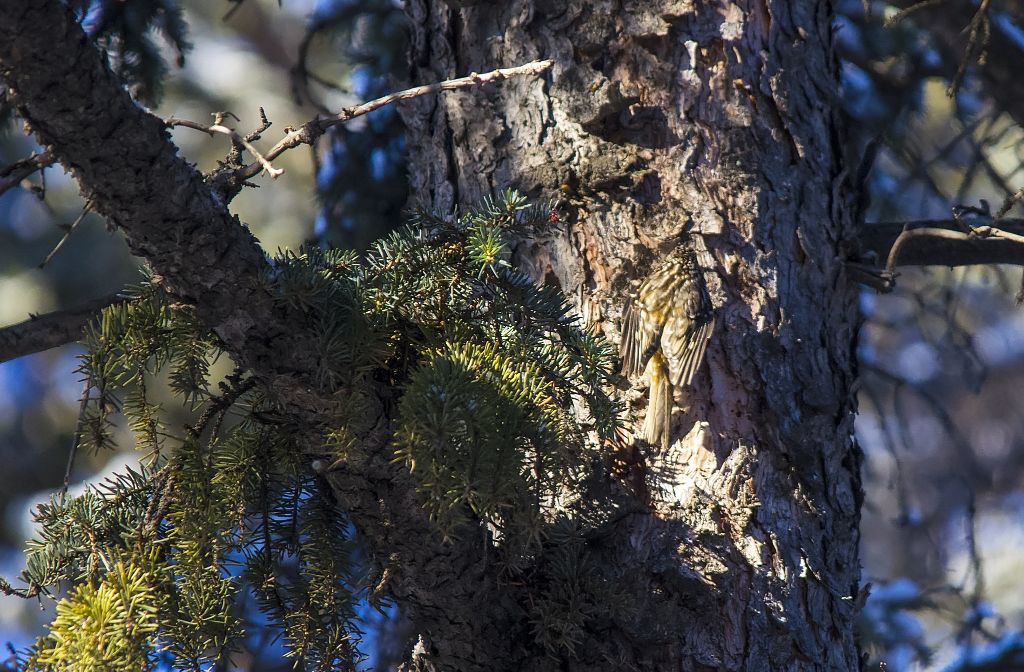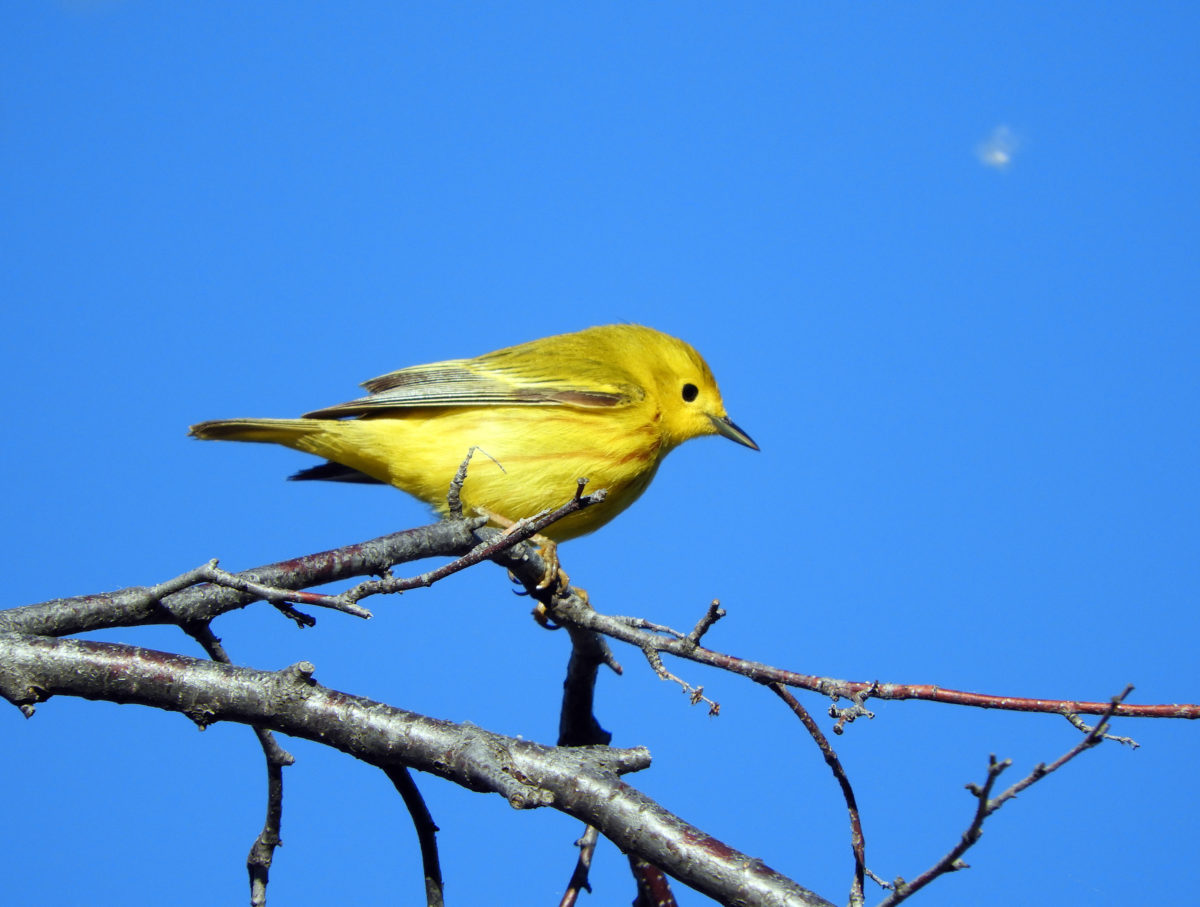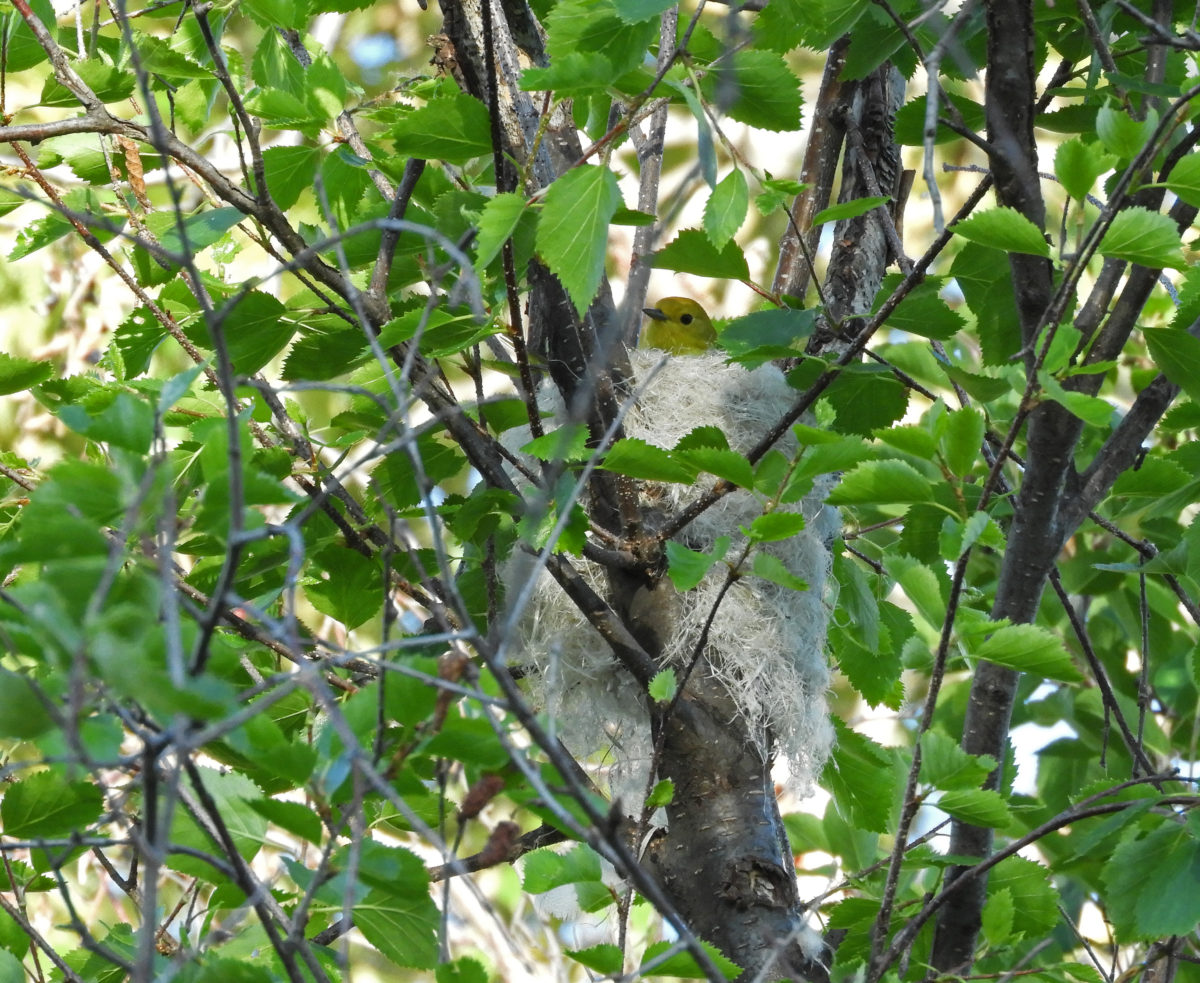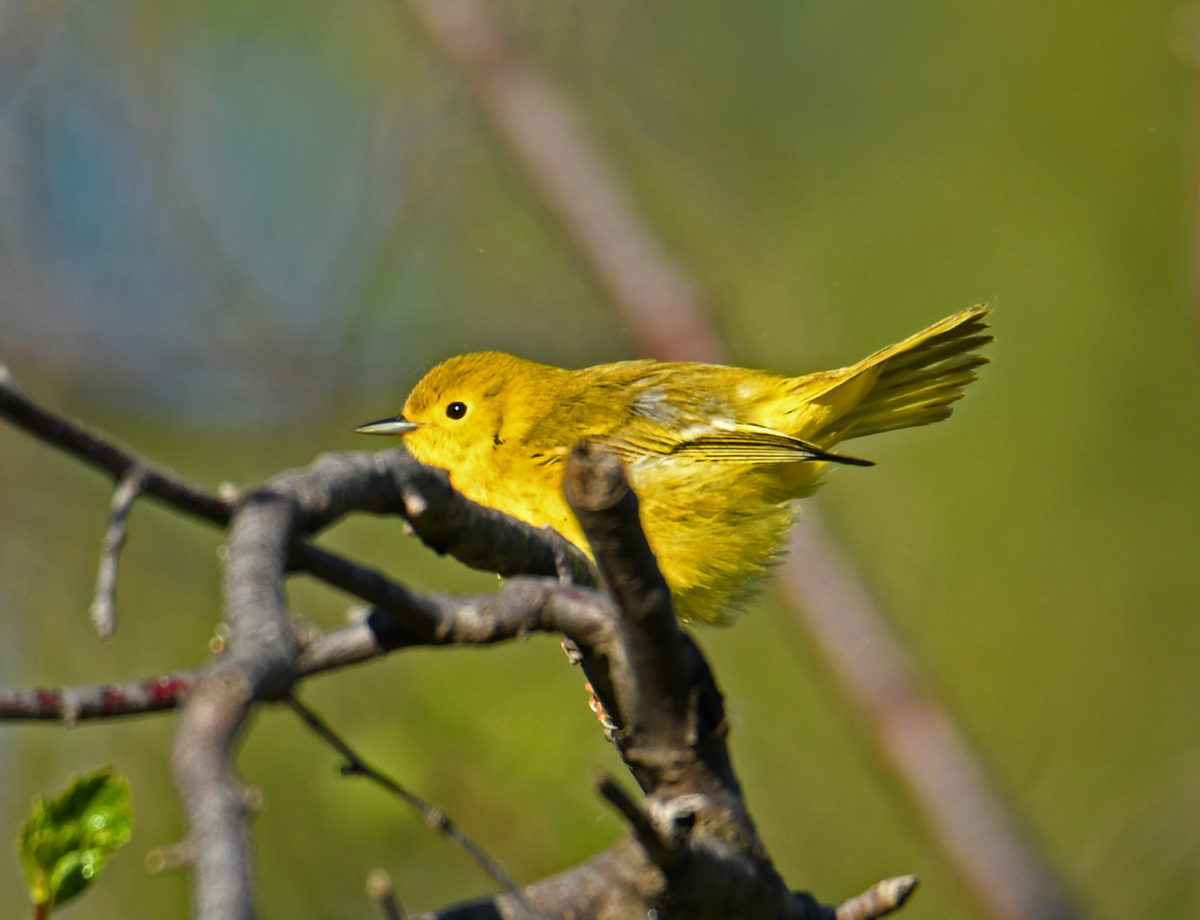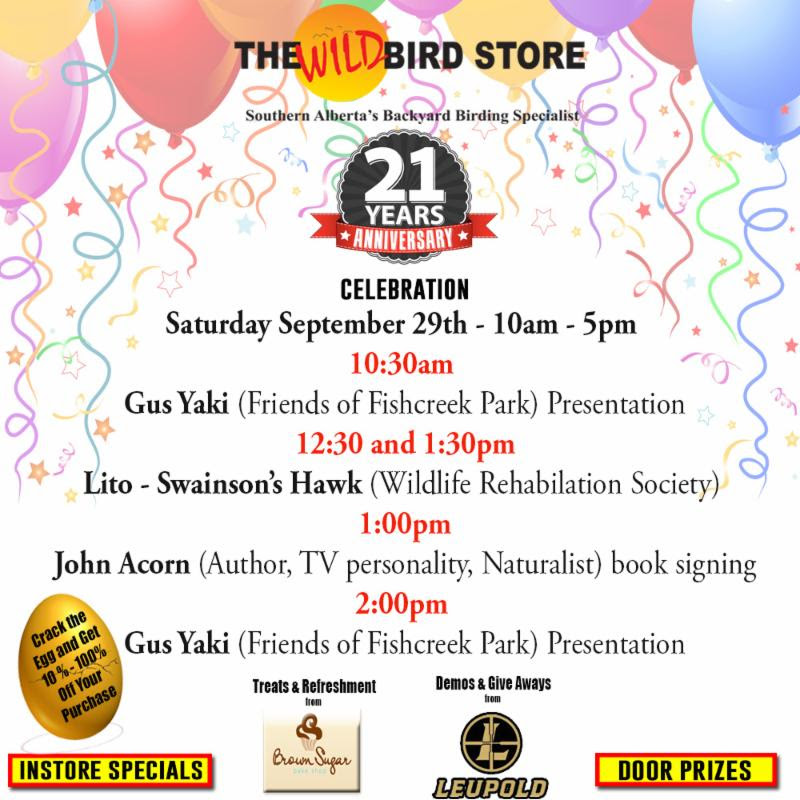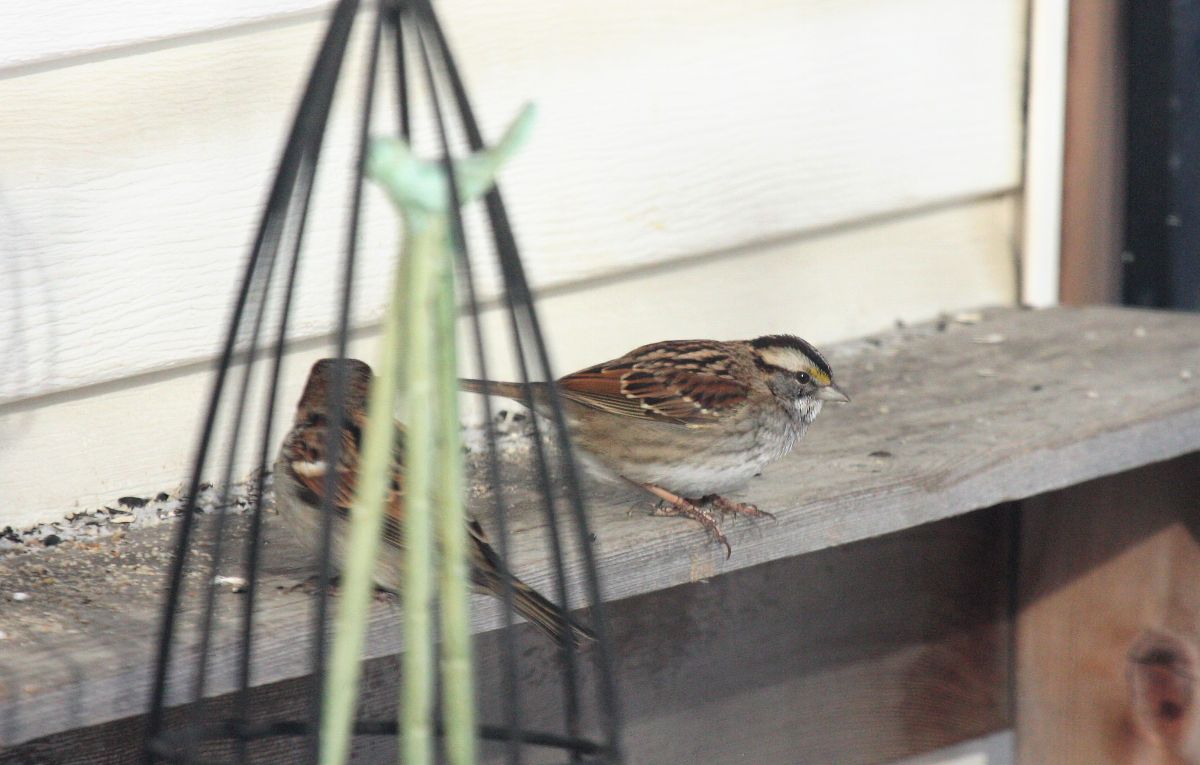By Cathy Warwick
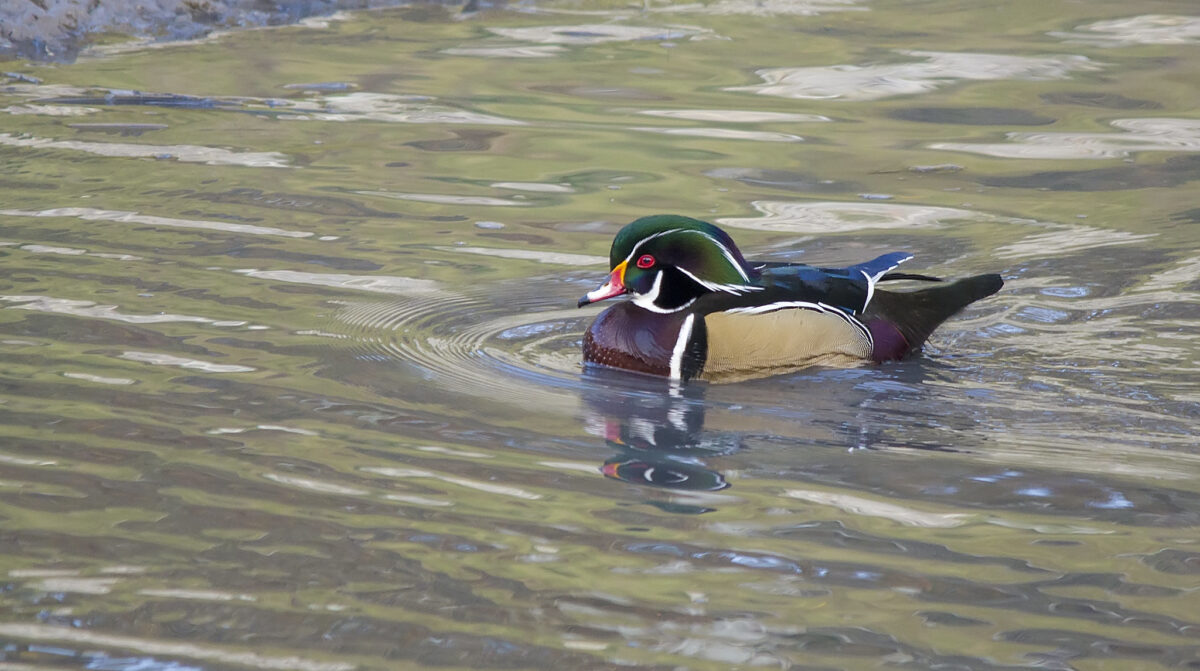
Calgary is lucky to have Wood Ducks within our city limits. In June eBird checklists have about a 5% chance of including a Wood Duck, compare this with Edmonton with only a 0.1% chance! Virtually zero! Something to keep in your back pocket next time the subject of hockey comes up. “Well we have Wood Ducks!”.
If you have seen a Wood Duck you will know why this is a brag. They are like a beautiful sculpture come to life. If you want to see one for the first time (or again) head to the Inglewood Bird Sanctuary, a Wood Duck hotspot. This waterfowl has a beautiful shimmery green pompadour swept back to the nape of its neck and bright red eyes. No boring modern minimalism for this guy, it has speckles, stripes, shimmers and all kinds of colour: burgundy, blue, a bit of beige. Its latin name is “Aix Sponsa”, which can be loosely translated to “bridal duck”, it’s all dressed up for a fancy wedding. (Audubon). The female has plainer plumage, she makes do with some speckles on her front and a large white eye ring.
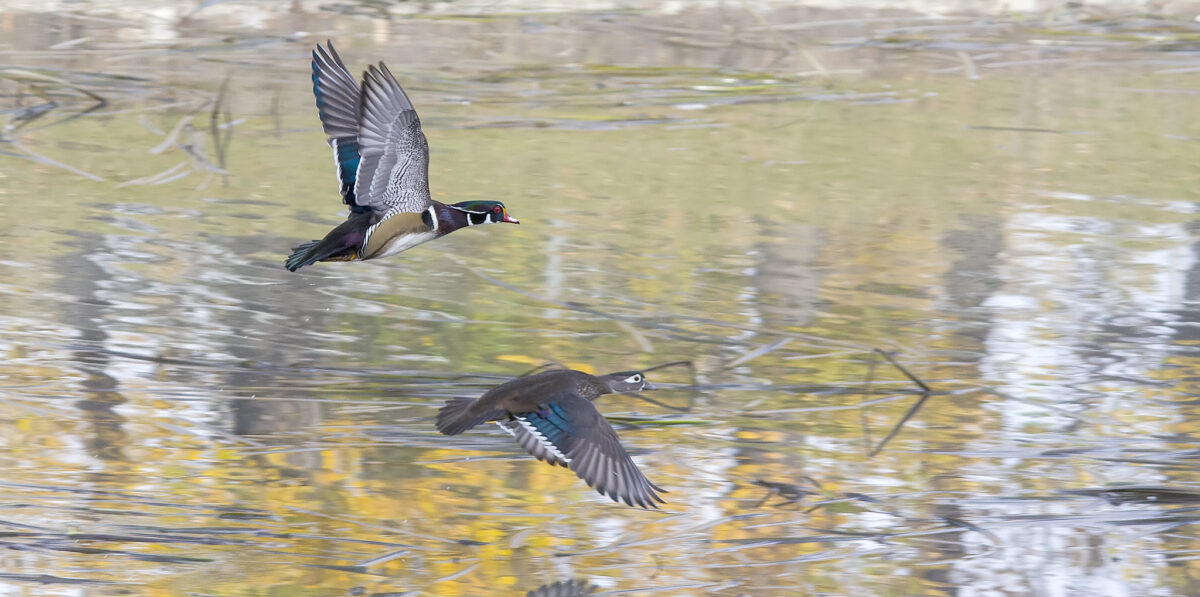
Its name comes from its close relationship to trees. The Wood Duck has claws on its duck feet that allow it to climb up trees. This is necessary since it nests in trees. The female will have two broods a year, which apparently is very rare for ducks. When the chicks are ready they will jump out of the tree, up to 50 feet! You have probably seen a video on the internet of ducklings jumping from trees in slow motion, landing like little puff balls on leaf litter. Their mom calls them out, encouraging them to jump, but doesn’t help otherwise. Then they follow her to the pond.
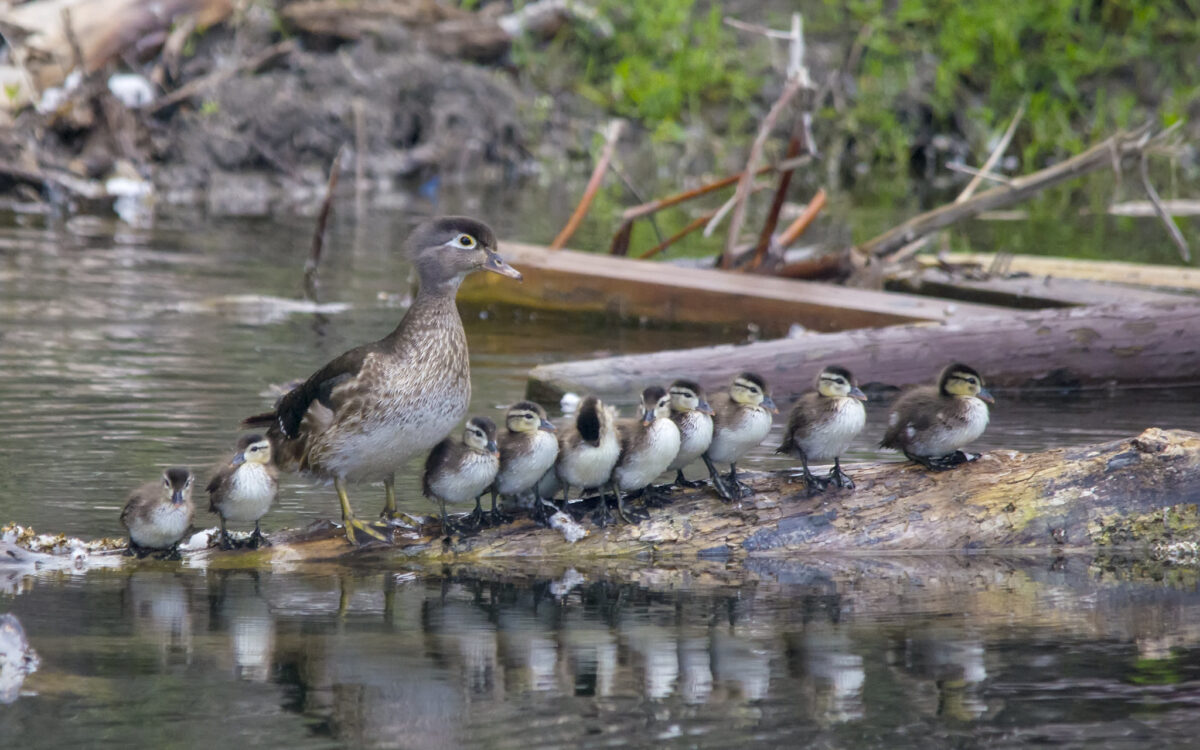
So make a trip to the Inglewood Bird Sanctuary and you might get lucky and see the famous Wood Duck. They will be in the pond looking for weeds to eat. They also love perching on the logs in there, firmly in place with their claws, making it easier for you to get a picture of their finery.

Photo: wikimedia commons no restrictions.
